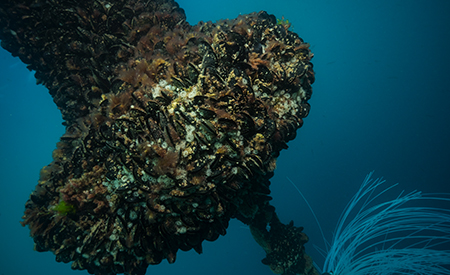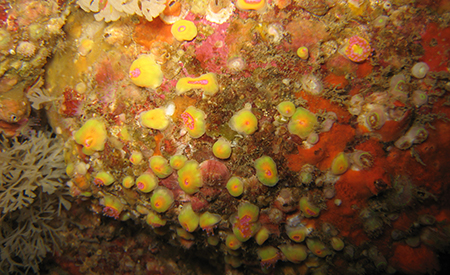Ocean thermal energy
Type of resources
Available actions
Topics
Keywords
Contact for the resource
Provided by
Formats
status
-

The objectives of the ABIOP+ project were to : • Provide characterisation protocols for biofouling on cable and mooring lines materials which are very vulnerable to this biological process, in order to collect quantitative in-situ data. • Inventory existing fouling management methods and test the solutions best suited for floating offshore wind turbines.
-

Backup of the data used for characterising the different biofouling monitoring protocols in an excel file.
-

Excel database containing the information collected for the atlas (45 sources for the French maritime façades + 24 on a global scale) and shapefiles for the cartographic representation of the available data
-
The consequences of climate change for marine organisms are now well-known, and include metabolism and behavior modification, distribution area shifts and changes in the community. In the Bay of Biscay, the potential environmental niches of subtropical non-indigenous species (NIS) are projected to expand as a response to sea temperature rise by the mid-century under the RCP8.5 climate change scenario. In this context, this study aims to project the combined effects of changes in indigenous species distribution and metabolism and NIS arrivals on the functioning of the Bay of Biscay trophic network. To do this, we created six different Ecopath food web models: a “current situation” trophic model (2007–2016) and five “future” trophic models. The latter five models included various NIS biomass combinations to reflect different potential scenarios of NIS arrivals. For each model, eight Ecological Network Analysis (ENA) indices were calculated, describing the properties of the food web resulting from the sum of interactions between organisms. Our results illustrate that rising temperature increases the quantity of energy passing through the system due to increased productivity. A decrease in the biomass of some trophic groups due to the reduction of their potential environmental niches also leads to changes in the structure of the trophic network. The arrival of NIS is projected to change the fate of organic matter within the ecosystem, with higher cycling, relative ascendency, and a chain-like food web. It could also cause new trophic interactions that could lead to competition and thus modify the food-web structure, with lower omnivory and higher detritivory. The combined impacts (increasing temperatures and NIS arrivals) could lower the resilience and resistance of the system.
-

The macrofouling qualification and quantification protocols were extracted from 64 public documents (33 scientific articles, 1 book chapter, 22 internal reports, 4 internship reports and 4 theses) presenting studies conducted in France (n = 40), Europe (n = 16) and the world (n = 8).
-

The main objective of this atlas is to summarise the knowledge acquired on biofouling, and more generally on communities of living organisms on hard substrates, available today in mainland France and the French overseas territories, in order to anticipate the issues that this phenomenon will pose in an ORE context. The atlas is based on the most exhaustive bibliographical analysis possible, including A-level scientific articles, reports (training courses, monitoring, studies), and works presenting the results of studies conducted in French waters
-

Proposal of protocols for measuring several biofouling variables (fresh weight in air, fresh weight in water, biovolume, thickness) that were tested during the project.
-

During the ABIOP project launch meeting, the consortium agreed to add a task to the project aimed at identifying the challenges of biocolonisation in an ORE context. This additional work is indeed necessary because it allows the organisation, updating and presentation of the reflections undertaken by biofouling experts from various industrial and research entities and federated by FEM, for several years on this topic.
-

The most commonly used procedure for prediction of the behaviour of laterally loaded piles is the P–y curve formulation, which gives a simple but efficient framework to predict the response of the pile. This framework is limited to a single direction of loading, while there are several situations in which a pile is subjected to lateral loads with varying direction, as for example in the case of wind or wave loads. Here an extended framework for P–y curve modelling is presented, in which several springs are considered around the pile perimeter at each depth. The advantage of this framework is that it remains as simple and practical as the original P–y curve method and does not need any further information or parameters. A procedure is proposed for the extension of a given unidirectional model to the corresponding multi-directional one. The effects of multi-directional loading are discussed based on the simulation results. With a change in loading direction, misalignment between load direction and total displacement occurs. In addition, this quite simple model enables deduction of the profile of irreversible soil displacements around the pile at various depths.
 Catalogue PIGMA
Catalogue PIGMA